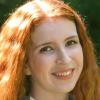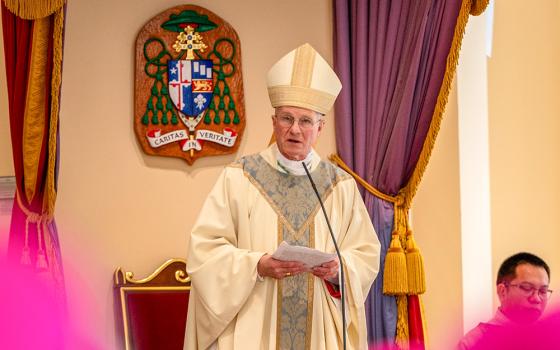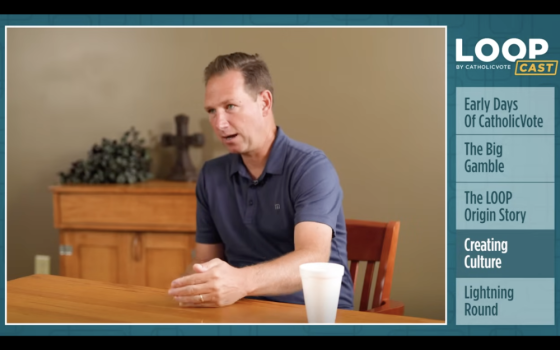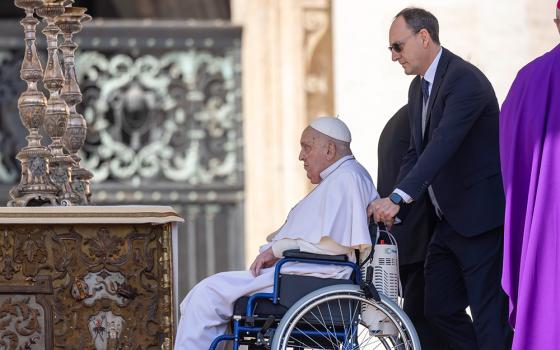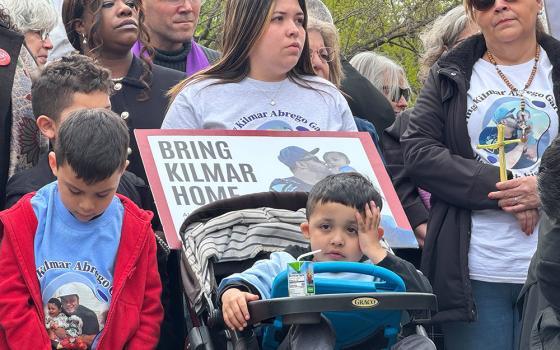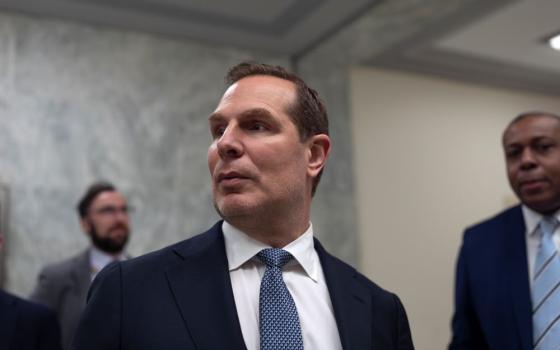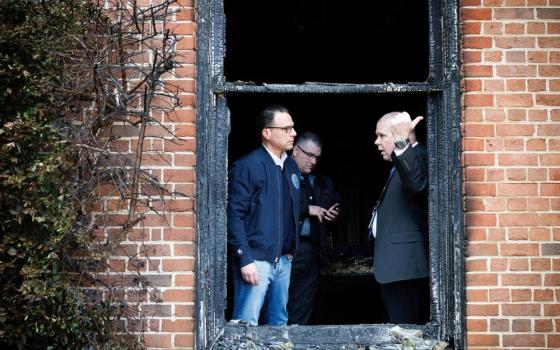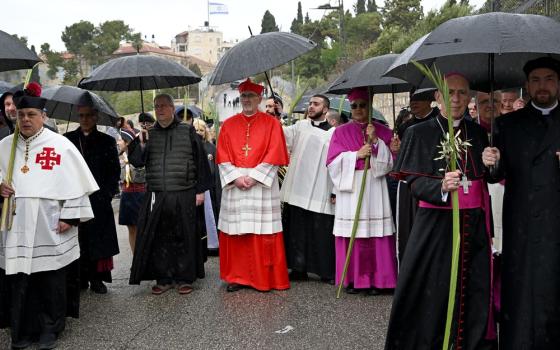
A bird is pictured in County Cork, Ireland. Irish ornithologist Séan Ronayne's enthusiasm for birds started in his youth. As a child who struggled to fit in among peers, he took solace in the woods and coastlines around his home in Cobh, County Cork. (Wikimedia Commons/David Sands, CC BY-SA 2.0)
Life is punctuated by the chatter of birds — be it the cries of a flock of geese migrating south, a pigeon warbling just outside a cityscape window, or a crow cawing high above the treetops. But this chatter is more than mere background noise — it is marvelous speech that can help us understand ecological landscapes.
Irish ornithologist, wildlife sound recordist and environmental activist Séan Ronayne set out in 2021 to record the sound of every native bird species in the Irish bioregion — almost 200 birds. The resulting documentary film, "Birdsong," tracks his spirited travels throughout the island to capture a glimpse of each bird's song.
"The project is very, very ambitious," he said. "To record them is incredibly challenging. It's not just show up and press record."
Recording conditions, from roadside noise to dog barks to high winds, complicate his ventures. Despite these obstacles, Ronayne pushes on, driven by the hope of finding a new song. On several occasions, he finds the "perfect chorus spot." In one, a relatively undisturbed heather moorland, he records the trill of a red grouse.
Ronayne, in his infinite knowledge of birds, identifies and waxes poetic about the birds in each region he visits, from Manx shearwater and other seabirds in Skellig Michael to skylarks in the hilly Irish uplands. He shares this knowledge with people across Ireland in classrooms and at speaking events, to spread the word on addressing environmental degradation and bird population decline.

Séan Ronayne, seen in a trailer for the documentary film "Birdsong", set out in 2021 to record the sound of every native bird species in Ireland. "Birdsong" tracks Ronayne's travels throughout the island. (NCR screengrab/YouTube/RTÉ)
"We need as many people on board and we need as many people to care about this," he said, "because the more people that care and the more people that are invested in these birds, they're less likely they're going to disappear."
Ronayne is intensely committed to his task. He even chooses to work manually, avoiding artificial intelligence in the process.
"I want to feel and understand every nook and cranny of my work. Editing birds' sounds for me is an extension of my learning out in actual nature. … I want to hear and see everything I can fit into my waking life. AI takes the soul out of this process."
Ronayne's enthusiasm for birds is a delight to watch, and as the film elaborates, started in his youth. As a child who struggled to fit in among peers, Ronayne took solace in the woods and coastlines around his home in Cobh, County Cork.
Today, Ronayne has language for his difference: he was diagnosed with autism in his early 30s. "Birdsong" shows how the language of creation can provide catharsis for individuals with autism like Ronayne, and how this language can powerfully enrich anyone's ecological understanding.
Advertisement
Visitors to Ireland often remark at its vibrant green landscape, affording it its reputation as "The Emerald Isle." Yet as Ronayne told me, "The Irish media sell Ireland as a green paradise and I very much need everyone to know that this is not at all the case."
In one scene, Ronayne captures the song of the last pair of ring ouzel in Ireland. This, he laments, is the sound of extinction.
In Ireland 63% of birds are in decline. Many bird species, Ronayne said, have been listed as red or amber, indicating vulnerable status. The growing vulnerability of native birds is a result of the changing natural landscapes of Ireland, prompted by human activity.
Extreme industrial agriculture, non-native sitka spruce plantations, drained/mined peat bogs, bald and overgrazed mountains, and other human actions have degraded local ecologies across Ireland, hurting birds and other creatures in the process.
One of the most harrowing aspects of the Irish bioregion is its profound lack of native woodland cover — just 2%. According to an article at The Conversation, historically, native trees were cleared for fields and pasture. In time, the Irish government has sponsored reforestation efforts, to poor effect. Annual grants incentivized planting fast-growing, non-native species, resulting in more than 9% of the island's total land area being covered in conifers from Alaska. When harvested, these trees "disturb wildlife, release carbon, damage water quality" and scar the landscape.
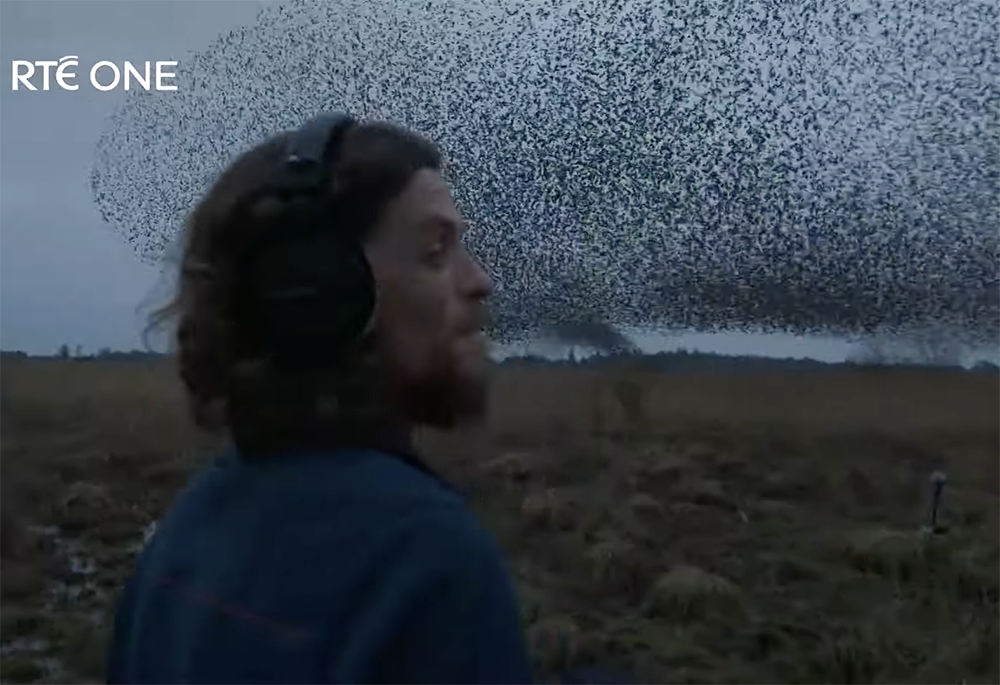
Irish ornithologist Séan Ronayne observes a murmuration in a trailer for the documentary "Birdsong." (NCR screengrab/YouTube/RTÉ)
And yet, Ronayne’s work, captured in this film, encourages us onward. Staring down a litany of environmental challenges, he remains hopeful and steadfast. By illustrating the fruits of a slow, meticulous commitment to the Earth, "Birdsong" is a visual antidote to an overconsuming, hurried, extractive culture
"I absolutely find spirituality in nature," Ronayne said. "It's where I go to nourish and recharge my soul."
While Ronayne elaborates more on his connection to nature in his autobiography, Nature Boy: A Journey of Birdsong and Belonging, the film provides a glimpse into his spirituality through his palpable wonder at the Irish landscape. While traveling to Skellig Michael to record birds like the iconic puffin and gannet colonies, he remarked that the islands are "like a cathedral."
"Birdsong" is a beautiful viewing and learning experience. At 52 minutes, it is a short, albeit powerful watch, transporting the viewer into the wondrous world of birdsong.
The final scene captures a starling murmuration — a beautiful sight, calling to mind a heavenly embrace. With this ending, "Birdsong" sends its viewers forth, encouraging them to think about how to return this embrace through environmental care and justice.
